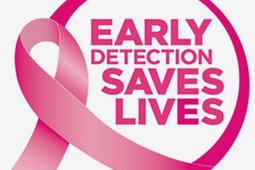Categories
- Bariatric Surgery (11)
- Black Fungus (5)
- Bone Marrow transplant (3)
- Brain Tumor Surgery Navigation Technology (20)
- Cardiac Surgery (66)
- Cardiology (97)
- Computer navigation technology for joint replacements (20)
- Covid Vaccination (17)
- Critical Care (2)
- Dental (19)
- Dermatology (31)
- Dialysis Support Group - “UTSAAH” (11)
- Dietitian (33)
- Emergency Medicine (4)
- Emotional Health (11)
- Endocrinology (33)
- ENT (20)
- Gastroenterology and GI Surgery (53)
- General and Laparoscopic Surgery (21)
- General Surgery (4)
- Gynecology & Obstetrics (183)
- Hematology (20)
- Internal Medicine (294)
- Kidney Transplant (50)
- Kidney Transplantation (20)
- Lung Cancer (8)
- Minimal Invasive Surgery (1)
- Mother & Child (20)
- mucormycosis (5)
- Nephrology (61)
- Neurology (147)
- Neurosurgery (68)
- Nutrition and Dietetics (107)
- Omicron Variant (1)
- Oncology (288)
- Ophthalmology (10)
- Orthopaedics & Joint Replacement (86)
- Paediatrics (59)
- Pediatric Nephrology (3)
- Physiotherapy (5)
- Plastic & Reconstructive Surgery (6)
- Psychiatry and Psychology (90)
- Psychologist (28)
- Pulmonology (72)
- Rheumatology (13)
- Spine Services (21)
- Transradial Angioplasty (16)
- Urology (84)
Query Form
Posted on Apr 19, 2022
Cancer and Survival Rates depend on Early Detection
Today we are all aware that each day the incidence of Cancer is increasing at an alarming rate. So are the mortality and the morbidity associated with it. Despite the rapid advancement and the modernization of medicine, prevention, early detection and timely treatment are the aspects that still dominate.
The answers to simple questions – “Why is early diagnosis important? How early diagnosis can improve survival?” have been statistically proven after intense medical researches and trials.
It is very important to remember that the term “5 year survival or 10 year survival” are often used by doctors. This doesn’t highlight that the patient’s life is only limited to 5 -10 years. In medical statistical term, 5 -10 year survival correlates to the number of people in research study groups who were still alive 5 yrs or 10 years after diagnosis and specific treatment respectively. There is still a small chance for the disease to relapse/reappear. Cancer diagnosed at an early stage, is more likely to be treated successfully and the survival rate is much higher while on other side if the cancer is detected at an advanced stage, treatment becomes more difficult, and ultimately a person’s chances of survival are much lower. Below are some examples of how spotting cancer early can make a real difference(National Cancer Institute’s SEER database between 2004 to 2010):

Bowel cancer: More than 9 in 10 bowel cancer patients will survive the disease for more than 5 years if diagnosed at the earliest stage
Colon Cancer
- The 5-year relative survival rate for people with stage I colon cancer is about 92%.
- For people with stage IIA colon cancer, the 5-year relative survival rate is about 87% while for stage IIB cancer, the survival rate is drop to about 63%.
- The 5-year relative survival rate for stage IIIA colon cancers is about 89%, for stage IIIB is about 69%, and for stage IIIC is about 53%.
- People with Colon cancers that have spread to other parts of the body i.e. metastatic, or stage IV cancers, are often difficult to treat and ultimately 5-year relative survival rate drop to about 11%. Still, there are multiple treatment options available for people even in this advanced stage.
Rectal Cancer
- The 5-year relative survival rate for people with stage I rectal cancer is about 87%.
- For people with stage IIA rectal cancer, the 5-year relative survival rate is about 80% while for stage IIB cancer, the survival rate is about 49%.
- The 5-year relative survival rate for stage IIIA rectal cancers is about 84%, for stage IIIB cancers is about 71%, and for stage IIIC cancers the survival rate is about 58%.
- The 5-year relative survival rate for people of metastatic, or stage IV rectal cancers, is about 12%.
Breast Cancer:
Among female cancers, breast cancer accounts as the second most prevalent cancer in rural India, while it stands first in urban or metro India. Globally breast cancer ranks on top among all cancers in females. In India, for every women newly diagnosed with breast cancer, one woman dies of it.
- More than 90% of women diagnosed with breast cancer at early stages survive for 5 years more as compared to around 15% for women diagnosed at advanced stages. Below are the scores of survival according to the stage of detection:
Stage Relative 5-year Survival Rate
0 100%
I 100%
II 93%
III 72%
IV 22%
Ovarian cancer
- The 5-year relative survival rate is 45% for all types of ovarian cancer.
- If ovarian cancer is diagnosed and treated before the cancer has spread outside the ovary (stages I), the 5-year relative survival rate is 92% but unfortunately, only 15% of all ovarian cancers are found at this early stage.
Stage Relative 5-year Survival Rate
I 92%
II 70%
III 39%
IV 17%
Lung Cancer
- It is the most silent killer cancer in India. The main reason for the same is tobacco smoking.. Early diagnosis can increase chances of survival
- Only 15% lung cancers are diagnosed at an early or localized stage, where the 5-year survival rate is about 54%.
- Around 70% of lung cancer patients will survive for at least a year if diagnosed at the earliest stage.
- For distant tumors spread to other organs i.e. advanced stage/stage IV, the five-year survival rate drops to only 4 percent.
Oral and Oro-Pharyngeal Cancer
- If the cancer is diagnosed at an early stage, the five-year survival rate is 83%.
- If the cancer has spread to surrounding tissues or organs and/or the regional lymph nodes, the five-year survival rate is 61%.
- If the cancer has spread to a distant part of the body, the five-year survival rate is 37%.
- However, survival rates vary widely depending on the location of tumour, whether the person has HPV, and extent of the disease.
Gall bladder Cancer:
The rates below are based on the stage of the cancer at the time of diagnosis (published in the AJCC Cancer Staging Manual in 2010). Incidence of gall bladder cancer is steadily rising even approaching 20% in Ganga belt region. Below table showing how much fetal:
Stage Relative 5-Year Survival Rate
0 80%
I 50%
II 28%
IIIA 8%
IIIB 7%
IVA 4%
IVB 2%
Why are some cancers diagnosed late?
As we all know that late diagnosis ant late initiation of treatment leads to more chances of morbidity and mortality. In UK, around 25% of cancers are diagnosed through emergency admission in hospitals and most of them have lower chances of survival compared to other patients. There are multiple reasons for the late diagnosis:
- Lack of awareness or low awareness of cancer signs and symptoms. Also people keep on ignoring the signs and symptoms.
- Misconception about the procedure of diagnosis – they hesitate for Cytology or Biopsy or surgery, leading to progression of disease.
- Delay in diagnosis due to inadequate medical infrastructure facilities in the area.
- Cost-effective diagnosis and management of cancer may be one reason of late diagnosis especially in poor or developing countries
- Some people might delay because they are worried about what the doctor might find or they do not want to waste the doctor’s time



